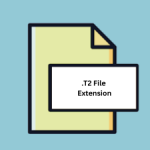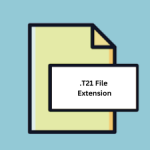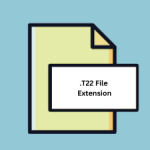.HISTORY File Extension

Unix C Shell History
| Developer | N/A |
| Popularity | |
| Category | Data Files |
| Format | .HISTORY |
| Cross Platform | Update Soon |
What is an HISTORY file?
In the realm of Unix-based operating systems, particularly within the context of the C shell (csh), the .HISTORY file extension holds significant importance.
This file type primarily stores a chronological record of commands executed within a shell session, offering users the ability to revisit and reuse previous commands efficiently. Understanding its origin, structure, and functionalities unveils its pivotal role in Unix environments.
More Information.
The .HISTORY file extension emerged as a solution to address the need for preserving command-line interactions.
Initially, its purpose revolved around enhancing user productivity by facilitating command recall and reuse.
With each command entered in a shell session, the .HISTORY file captures the command along with relevant metadata, such as timestamps, aiding in comprehensive session management.
Origin Of This File.
The concept of command history traces back to the early days of Unix development in the 1970s. As command-line interfaces became predominant, users sought methods to recall and re-execute previously entered commands.
The birth of the C shell introduced a dedicated mechanism for maintaining command history, leading to the creation of the .HISTORY file extension.
File Structure Technical Specification.
The structure of .HISTORY files adhere to a predefined format optimized for efficient storage and retrieval of command history data.
Typically, these files consist of plain text entries, each representing a command executed within a shell session.
Metadata associated with each command, including timestamps and execution sequence numbers, might be included for organizational purposes.
How to Convert the File?
Converting a .HISTORY file into a more accessible format can be achieved through various methods and tools. Here’s a straightforward guide on how to perform the conversion:
1. Export to Plain Text:
- Open the .HISTORY file using a text editor.
- Save the file as plain text by choosing the “Save As” option and selecting the desired text file format.
2. Conversion with Specialized Tools:
- Explore specialized software or scripts designed for .HISTORY file conversion.
- These tools may offer advanced features such as filtering or sorting the command history data.
3. Import into Database or Spreadsheet Software:
- Convert the .HISTORY file to a compatible format for your database or spreadsheet software (e.g., CSV).
- Import the converted file into your preferred software.
- Utilize the software’s functionalities for data analysis or visualization.
4. Custom Scripting:
- Develop custom scripts or programs to parse and process .HISTORY files according to your specific requirements.
- This approach offers flexibility and customization options tailored to your workflow.
5. Online Converters:
- Explore online conversion services that support .HISTORY file conversion.
- Exercise caution and ensure the security of your data when using online tools.
Advantages And Disadvantages.
Advantage:
- Enhanced Productivity: The .HISTORY file extension streamlines command recall, enabling users to retrieve and reuse previous commands effortlessly.
- Session Management: By maintaining a comprehensive record of shell interactions, .HISTORY files facilitate effective session management and troubleshooting.
- Customization: Users often have the flexibility to configure the behavior and retention policies of .HISTORY files, tailoring them to their specific workflow requirements.
Disadvantage:
- Security Concerns: Since .HISTORY files contain a log of commands executed, they might pose security risks if accessed by unauthorized users, potentially exposing sensitive information.
- File Size: Accumulation of extensive command history over time can lead to bloated .HISTORY files, consuming storage space and potentially impacting performance.
How to Open HISTORY?
Open In Windows
- Use text editors like Notepad or Notepad++ to open .HISTORY files.
- Alternatively, consider using specialized Unix-compatible text editors available for Windows, such as Sublime Text or Atom.
Open In Linux
- Linux natively supports .HISTORY files, allowing you to open them with standard text editors like Vim, Nano, or Gedit.
You can also use terminal commands like “cat” or “less” to view the contents of .HISTORY files directly from the command line.
Open In MAC
- Similar to Linux, macOS provides built-in support for Unix-style text files, enabling you to open .HISTORY files with text editors like TextEdit or terminal-based commands.
- Additionally, consider using third-party text editors or Unix-compatible software available for macOS, such as BBEdit or Sublime Text.
Open In Android
- Android devices may require third-party file manager apps capable of handling Unix-style text files to open .HISTORY files.
- Look for file manager apps with support for text file viewing and editing, such as Solid Explorer, File Commander, or Amaze File Manager.
Open In IOS
- iOS devices typically require specialized apps available on the App Store to open .HISTORY files.
- Search for text editor apps compatible with Unix-style text files, such as Textastic Code Editor, iEditor, or Koder Code Editor.
Open in Others
- For other platforms or operating systems, you may need to explore alternative solutions or compatible software capable of handling Unix-style text files.
- Consider using cross-platform text editors or file management apps with support for Unix-style text files, ensuring compatibility across different environments.













